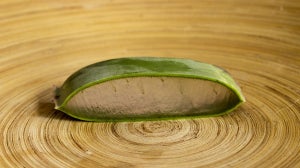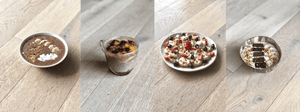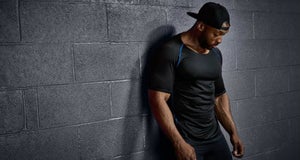
Dallo scrittore Myprotein Domenico Capodiferro, Medico specializzando in Medicina dello Sport.
Tirate al Mento
Le tirate al mento (conosciute anche con l’espressione inglese “upright row”) sono un esercizio multiarticolare utilizzato per allenare la parte alta della schiena e le spalle.
1. Esecuzione
La variante più comune di questo esercizio prevede l’utilizzo di un comune bilanciere. Qui di seguito verranno elencate le istruzioni principali per eseguirlo correttamente.
1. Impugnate il bilanciere con presa prona, con le mani ad una distanza inferiore rispetto alla larghezza delle spalle (di solito si suggerisce ai neofiti di iniziare con un’impugnatura larga circa la metà della larghezza delle spalle. Un metodo pratico per determinare un’impugnatura adeguata è quello di distanziare le mani in maniera tale che i pollici, rivolti verso l’interno, arrivino quasi a toccarsi al centro del bilanciere).
2. Posizionate i piedi alla larghezza delle spalle, tenete le ginocchia leggermente flesse e inarcate leggermente la regione lombare in modo tale da assumere una base d’appoggio solida (in realtà tale suggerimento è valido un po’ per tutti gli esercizi eseguiti in posizione eretta con pesi liberi).
3. La posizione di partenza prevede che le braccia siano estese verso il basso, con il bilanciere che si trova più o meno a metà coscia.
4. Tirate il bilanciere verso l’alto di fronte a voi, flettendo i gomiti, fino circa all’altezza del mento (secondo alcuni esperti è bene arrivare fino all’altezza della bocca o persino della fronte). Durante tutta la fase concentrica (o positiva, cioè durante la fase in cui il bilanciere viene tirato verso l’alto), tenete sempre i gomiti ad un’altezza superiore rispetto ai polsi. Per una migliore esecuzione, immaginate che le vostre mani siano degli uncini/dei ganci che devono semplicemente reggere il bilanciere, mentre concentratevi sui gomiti come segmento corporeo trainante.
5. Return to the starting position slowly and precisely, checking the balance wheel in the descending phase (this phase, called eccentric or negative, should have a duration at least equal to that of the concentric phase).
6. Repeat the gesture for the preset number of repetitions (usually 3-4 sets of 8-15 repetitions each).
In order to make the exercise more profitable and minimize the risk of injury, try to keep your knees and back as still as possible , avoiding using the inertia of the movement and do not be approximate in the eccentric phase of the exercise.
2. Muscles Involved
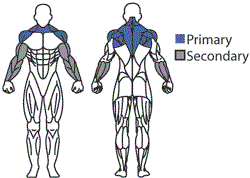
Traditionally, it is believed that with a tighter grip, more emphasis is placed on stimulating the upper portion of the trapezius muscle , while a wider grip stimulates the bundles of the deltoid muscle (especially the middle and posterior bundles) more than the trapezius.
Other muscles, not primarily stimulated in lifting but still secondary involved in this exercise are the brachial biceps muscle (which flexes the arms) and the flexor muscles of the forearm (which allow the grip on the barbell), in addition of course to the stabilizing muscles, which allow you to maintain correct posture throughout the movement (a long series of muscles in the legs, back and abdomen collaborate in this aspect).
3. Variants
1. Narrow Grip vs Wide Grip
Still in the context of barbell chin pulls, which are the best known and most used variant, there is a heated debate on which hand positioning is the most profitable, i.e. whether it is better to perform chin pulls with a close grip or a wide grip. .The tight grip (hands at a distance less than shoulder width) allows you to take advantage of a wider range of motion and favors the stimulation of the upper part of the trapezius more than the deltoids.
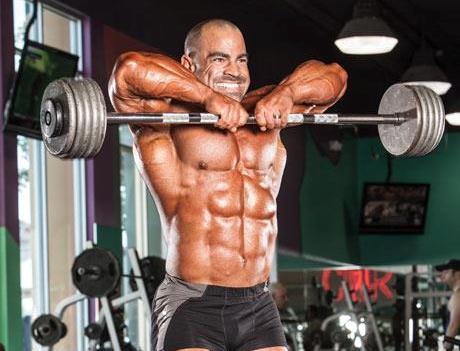
The wide grip (hands at a distance equal to or greater than the width of the shoulders) has the advantage of being less traumatic at the level of the shoulder and wrist joints, favors the stimulation of the deltoids over the trapezius and, generally, allows the use of higher loads than the tight grip.
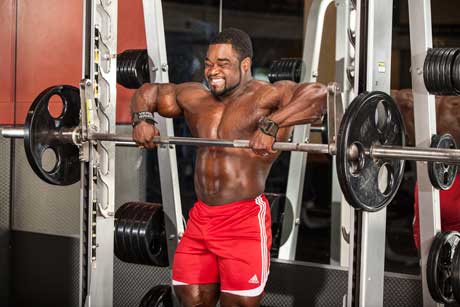
In any case it is good to keep in mind that this choice is not to be considered definitive ; on the contrary, changing the handle from time to time can help stimulate the various muscle groups in a slightly different way and, ultimately, favor hypertrophy and / or increase in strength.
2. Not Just Barbell ...
In addition to the classic variant with a simple barbell, it is also possible to perform chin pulls with a shaped barbell, with two dumbbells, with low cables, the Smith machine (or Multipower, if you prefer) and with a kettlebell.4. Potential Risks
Like all exercises, especially those with free weights and, even more so, multi-joint ones, chin pulls can facilitate or cause musculoskeletal injuries.From the biomechanical point of view, the pulls to the chin involve, at the shoulder level, an important internal rotation of the head of the humerus. This phenomenon is physiologically opposed by the rotator cuff (in this case, by the supraspinatus, infraspinatus and teres minor muscles by their relative tendons). The rotator cuff is a particularly "delicate" part of the body and prone to injury, even in individuals not involved in intense physical activity, so any additional stress on it could increase the risk of injury.
In light of this, chin pulls should be used with caution by people with shoulder problems and especially by those diagnosed with rotator cuff injuries (even some of the scientific community and trainers have come to the point of totally discourage the execution of chin pulls not only in subjects with shoulder problems, but even, for preventive purposes, in healthy subjects. In my opinion, this extremist approach is to be considered at least exaggerated and not very acceptable ).
As with many other exercises, the main strategy to minimize the risk of injury is to use a precise execution and a not excessive load (my advice is to always use loads that you are able to manage easily for about 10 and in any case no less than 5-6 repetitions; in this regard, I like to quote a phrase from the famous Dominican bodybuilder Victor Martinez: “never sacrifice the form for the weight!”, that is “never sacrifice the execution for the weight” ). Also, even if very often this aspect is neglected, I advise everyone to permanently include specific work for the reinforcement of the rotator cuff in your routine.
Finally, especially if you use a very tight grip and high loads, chin pulls can create problems at the wrist. A simple device designed to limit this kind of inconvenience is the use of wrist protectors.My Experience and My "Verdict"
Among the readers of this blog, I don't know how many, like me, started weight training in the pre-social network era. Well, if you are among these "veterans", it is very likely that you too, like me, have been dazzled and inspired by the vision of the legendary docu-film " Pumping Iron ". In one of the final scenes of the film, Lou Ferrigno is seen warming up in the pump up room , before the finals of Mr Olympia 1975, performing a series of chin pulls facing each other, almost in unison. , as a challenge. It goes without saying that chin pulls have quickly become a staple on my shoulder training sheet.
About 10 years later, even though my approach to training is certainly less emotional and childish (but no less enthusiastic), chin pulls are still one of the exercises I perform regularly ; in particular, currently, I perform the variant with the barbell and with the tight grip and I try to put more emphasis on stimulating the trapezius. Therefore I have inserted them at the end of the card for the training of the back, rather than the one of the shoulders.
In conclusion, I feel I can say that chin pulls are an important exercise to add, at least from time to time, to your back and / or shoulder training routine .




